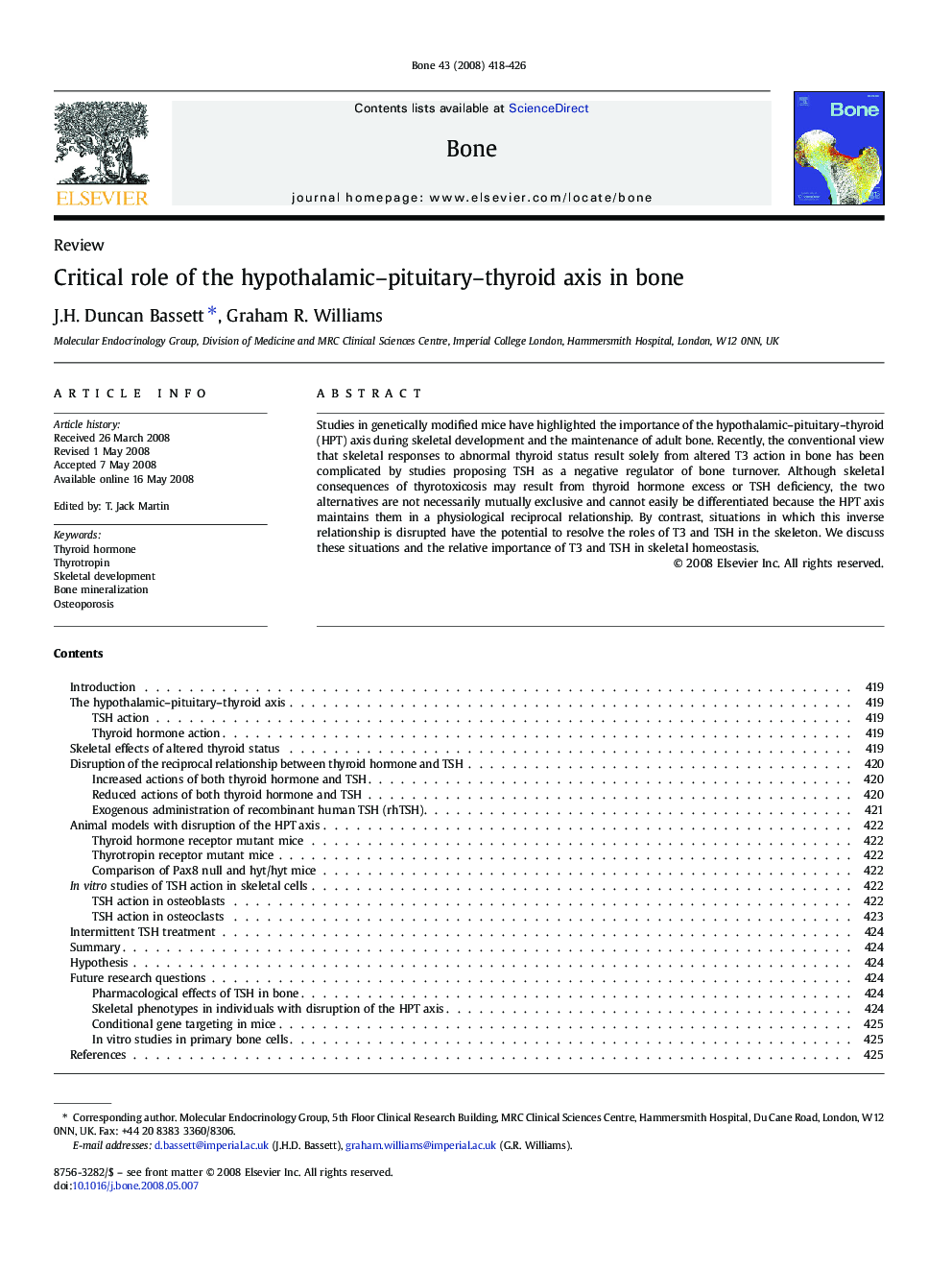| Article ID | Journal | Published Year | Pages | File Type |
|---|---|---|---|---|
| 5892293 | Bone | 2008 | 9 Pages |
Abstract
Studies in genetically modified mice have highlighted the importance of the hypothalamic-pituitary-thyroid (HPT) axis during skeletal development and the maintenance of adult bone. Recently, the conventional view that skeletal responses to abnormal thyroid status result solely from altered T3 action in bone has been complicated by studies proposing TSH as a negative regulator of bone turnover. Although skeletal consequences of thyrotoxicosis may result from thyroid hormone excess or TSH deficiency, the two alternatives are not necessarily mutually exclusive and cannot easily be differentiated because the HPT axis maintains them in a physiological reciprocal relationship. By contrast, situations in which this inverse relationship is disrupted have the potential to resolve the roles of T3 and TSH in the skeleton. We discuss these situations and the relative importance of T3 and TSH in skeletal homeostasis.
Related Topics
Life Sciences
Biochemistry, Genetics and Molecular Biology
Developmental Biology
Authors
J.H. Duncan Bassett, Graham R. Williams,
